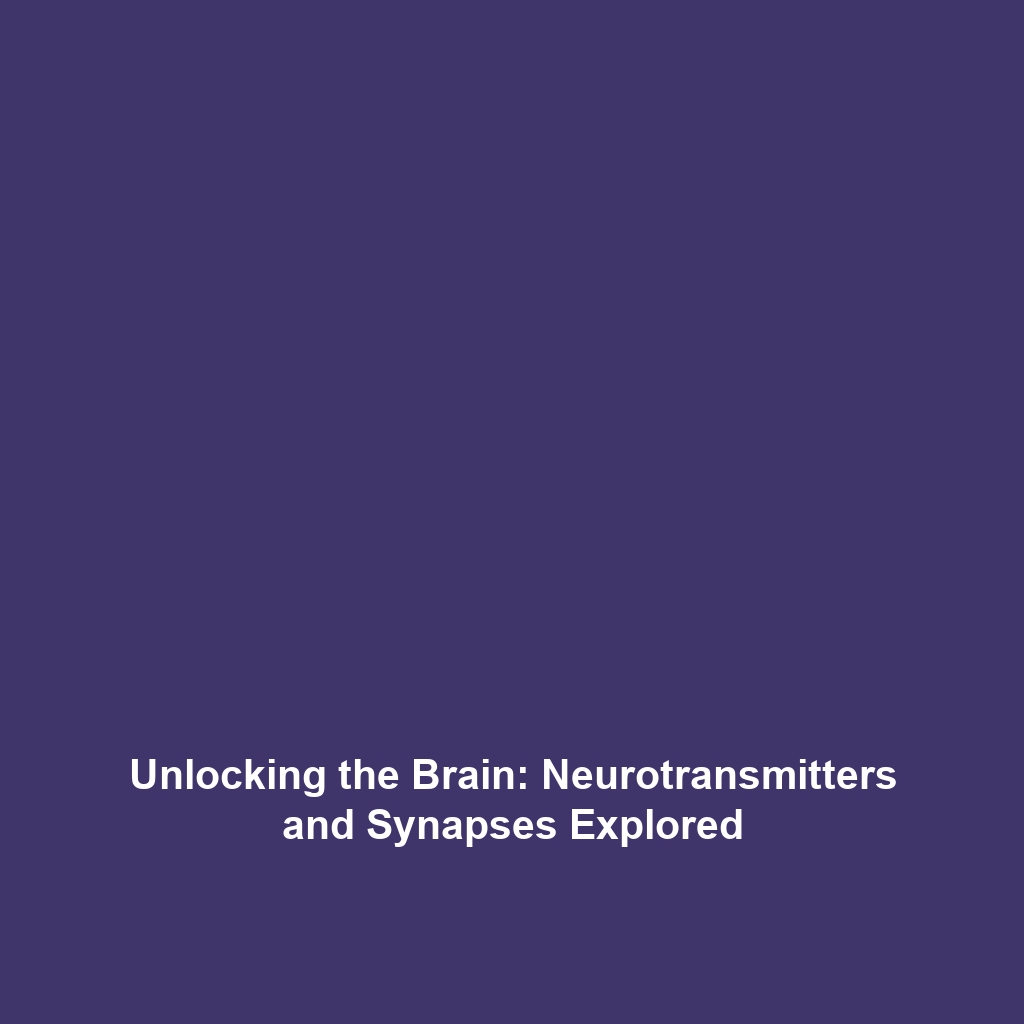Neuroplasticity: The Brain’s Remarkable Ability to Adapt
Introduction
Neuroplasticity refers to the brain’s extraordinary capability to reorganize itself by forming new neural connections throughout life, particularly in response to learning and injury. This dynamic phenomenon is critical in understanding how biomechanical functions, rehabilitation strategies, and overall motor control are influenced by brain adaptability. The implications of neuroplasticity extend beyond basic neuroscience, making it a pivotal topic in the realm of biomechanics, where understanding the brain-body interface can lead to innovative therapeutic approaches.
Key Concepts
Understanding Neuroplasticity
Neuroplasticity encompasses several major principles:
- Synaptic Plasticity: Changes in the strength of synapses, which enables enhanced communication among neurons.
- Developmental Plasticity: The process by which the brain adapts during childhood to learn new skills.
- Adult Neurogenesis: The formation of new neurons in certain brain regions, contributing to learning and memory processes.
Within biomechanics, understanding these principles is essential for developing effective rehabilitation protocols that leverage the brain’s ability to reorganize movement patterns after injury.
Applications and Real-World Uses
Neuroplasticity has transformative applications in biomechanics, including:
- Rehabilitation Techniques: Techniques such as constraint-induced movement therapy exploit neuroplasticity to improve motor function in stroke patients.
- Assistive Technologies: Brain-computer interfaces that allow individuals with movement disorders to control robotic limbs using thought alone.
- Sports Training: Customized training programs that emphasize skill acquisition exploit principles of neuroplasticity to enhance athlete performance.
These applications illustrate how neuroplasticity is integrated into biomechanics, optimizing both rehabilitation and performance enhancement.
Current Challenges
Despite its promises, studying and applying neuroplasticity in biomechanics faces several challenges:
- Individual Variability: Differences in how individuals’ brains respond to injury and rehabilitation can complicate treatment protocols.
- Limited Understanding: Ongoing research is needed to fully understand the mechanisms of neuroplasticity and their implications for biomechanical applications.
- Technological Integration: Bridging the gap between neuroscience and biomechanics in practical applications remains a challenge for researchers.
Future Research and Innovations
Future directions in neuroplasticity research promise exciting innovations in biomechanics:
- Use of Virtual Reality: Integrating VR technology to create immersive rehabilitation environments that can enhance motor learning.
- Personalized Medicine: Tailoring neuroplasticity-based therapies to individual patient profiles may improve outcomes in rehabilitation.
- Advanced Neuroimaging: Innovative imaging technologies will deepen our understanding of brain functions and enhance the development of biomechanical applications.
These innovations are pivotal in furthering our understanding of how neuroplasticity will transform biomechanics in the future.
Conclusion
In summary, neuroplasticity plays a vital role in the field of biomechanics, offering profound insights into motor recovery and skill acquisition. As research continues to uncover the brain’s remarkable capacity to adapt, there is a growing potential for innovative therapeutic approaches to improve quality of life. For further reading, explore our articles on advanced neuroimaging techniques and rehabilitation strategies. Stay informed about the evolving landscape of biomechanics and neuroplasticity!

Leave a Reply